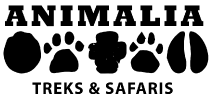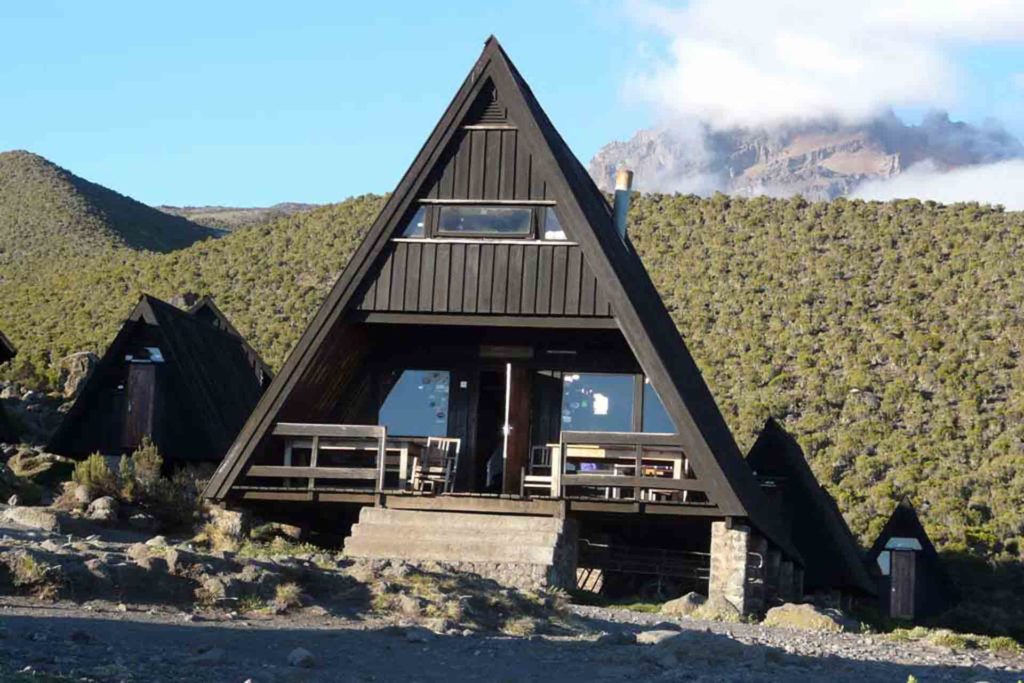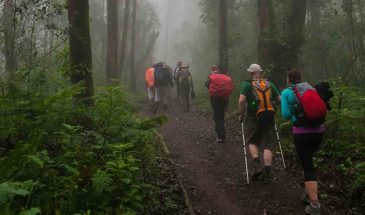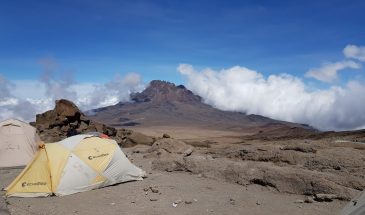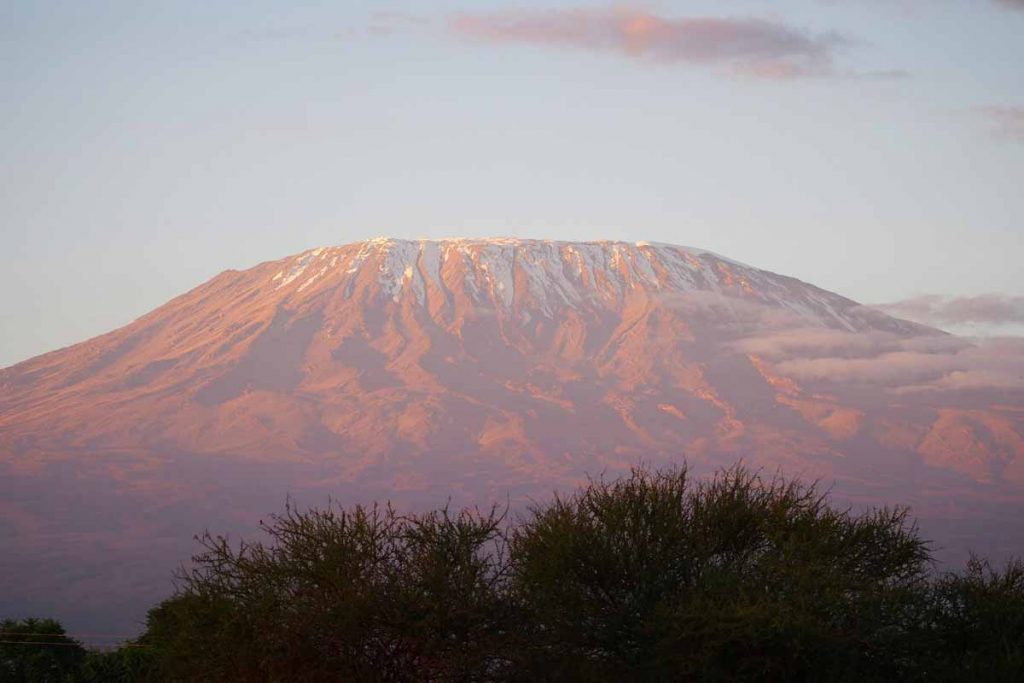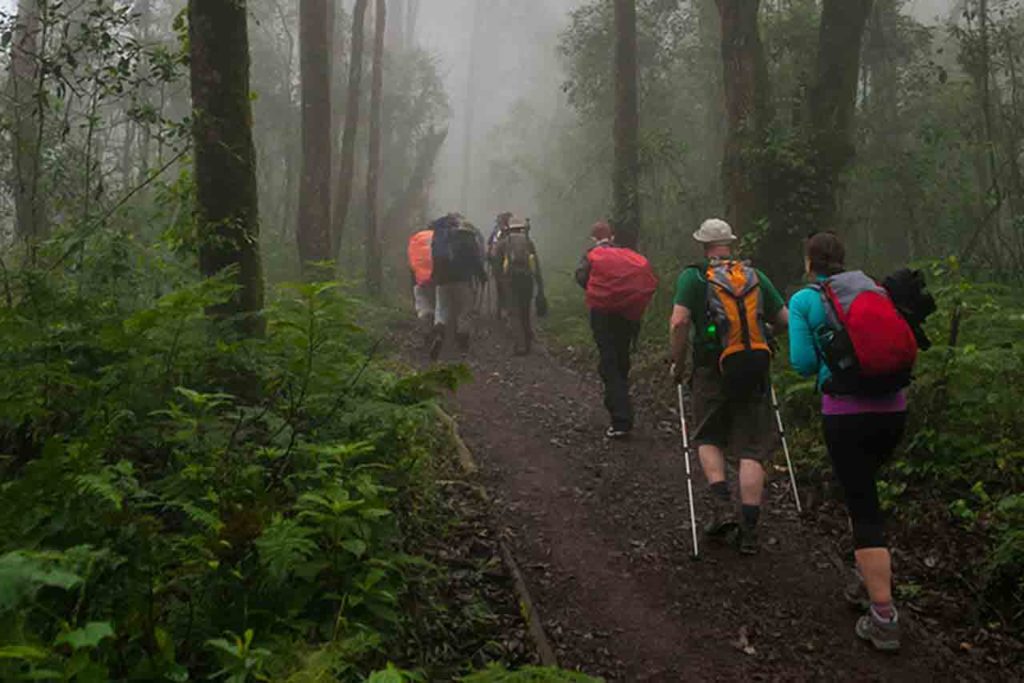- Overview
- Trip Outline
- Trip Includes
- Trip Excludes
- Gallery
- Booking
- FAQ
The Marangu route, also known as the “Coca-Cola” route, is the oldest, most well-established route on Kilimanjaro. This is the only route that offers sleeping huts in dormitory-style accommodations in lieu of camping. There are 60 bunk beds each at Mandara and Kibo Huts, and 120 bunk beds at Horombo Hut. Guests are supplied with mattresses and pillows, but sleeping bags are still required. The huts have communal dining halls and basic washrooms, ranging from flushing toilets and running water at the lower huts to long drop toilets and buckets of water at Kibo Hut.
Many favor Marangu because it is considered to be the easiest path on the mountain, given its gradual slope and direct path. However, the short time frame of the route makes altitude acclimatization fairly difficult. The route approaches Mount Kilimanjaro from the southeast. Marangu is, unfortunately, less scenic than the other routes because the ascent and descent are along the same path. It is also the most crowded route for that reason.
The Marangu route, also known as the “Coca-Cola” route, is the oldest, most well-established route on Kilimanjaro. This is the only route that offers sleeping huts in dormitory-style accommodations in lieu of camping. There are 60 bunk beds each at Mandara and Kibo Huts, and 120 bunk beds at Horombo Hut. Guests are supplied with mattresses and pillows, but sleeping bags are still required. The huts have communal dining halls and basic washrooms, ranging from flushing toilets and running water at the lower huts to long drop toilets and buckets of water at Kibo Hut.
Many favor Marangu because it is considered to be the easiest path on the mountain, given its gradual slope and direct path. However, the short time frame of the route makes altitude acclimatization fairly difficult. The route approaches Mount Kilimanjaro from the southeast. Marangu is, unfortunately, less scenic than the other routes because the ascent and descent are along the same path. It is also the most crowded route for that reason.
Itineraries
Arrival
Arrive in Tanzania
You will be picked up at the Kilimanjaro International Airport and transferred to your hotel in Moshi town; you will meet your guide who will brief you on your upcoming trek and do an equipment check to make sure you have all the necessary mountain gear. The missing gear can be rented on this day.
Overnight: at your Hotel in Moshi
Meals: Bed & Breakfast
Day 1
Marangu Gate (1860m) to Mandara Hut (2700m)
You will be picked up from your hotel in the morning and driven to the Mount Kilimanjaro National Park Gate. Once signed in at the park and final preparations are complete, we start ascending on a cleared ridge trail through the rain-forest. Our first night is at Mandara Hut camp set in a forest clearing. This camp consists of a group of wooden A-framed huts and flush toilets behind the main hut.
Distance: 8.3 km Hiking
Time: 5 hours
Meals: Breakfast, Lunch and Dinner Included.
Day 2
Mandara Hut (2700m) to Horombo Hut (3700m)
The day begins with an early breakfast. Shortly after you have left Mandara Hut, you will reach the timberline and then enter the heath and moor zone. Approximately 4 - 6 hours later, the Horombo Hut will come into sight, standing at an altitude of 3700m. From the hut, you will have fantastic views overlooking Mawenzi, Kibo and the wide plain of the Masai steppe.
Distance: 12.5 km Hiking
Time: 9 hours
Meals: Breakfast, Lunch and Dinner Included.
Day 3
Acclimatization trek to Zebra Rocks (4020m) then back to Horombo Hut (3700m)
Today serves as an acclimatization day. This should not be underestimated and greatly improves your chance of success in reaching the summit. After a relaxing breakfast, a 4 hour trek follows to the Zebra Rocks (4020m). The distinctive black and white stripes give the rock formation its name. On your return to Horombo Hut, a warm lunch will be waiting for you. You can relax in the afternoon and regain your strength for the hike the following day.
Distance: 5 km Hiking
Time: 4 hours
Meals: Breakfast, Lunch and Dinner Included.
Day 4
Horombo Hut (3700m) to Kibo Hut (4700m)
Today’s stage is long and tough. The well-built trail passes the “Last Water point” which is followed by the so-called “saddle”. This nearly vegetation less plateau joins the main summit Kibo with Mawenzi. Today’s destination is the Kibo Hut that is usually reached in about 5 – 6 hours. Here, you will enjoy an early evening meal followed by an early night, as the night will be short.
Distance: 9.5 km Hiking
Time: 6 - 7 hours
Meals: Breakfast, Lunch and Dinner Included.
Day 5
Kibo Hut (4700m) to Uhuru Peak (5895m) & down to Horombo Hut (3700m)
Today is “The Big Day” - the summit stage. You will begin your final ascent around midnight which will be long and strenuous. Passing the Hans Meyer Cave at 5220m, the climb slowly but surely goes upwards. At sunrise, you will reach Gillman’s Point (5681m) – the crater rim of Kilimanjaro - where the sun will slowly start to warm up the land. You will have soon forgotten the cold of the night and after a further hike of 1-2 hours, you will reach Uhuru Peak at 5895m. On your return to Kibo Hut, a warm meal awaits you followed by a 1 - 2 hour break before proceeding back down to Horombo Hut.
Distance: 22 km Hiking
Time: 12-15 hours
Meals: Breakfast, Lunch and Dinner Included.
Day 6
Horombo Hut (3700m) to Marangu Gate (1860m)
The last stage passes through the heath and moor zone to the Mandara Hut (2700m) where a warm lunch is waiting for you. Soon, you will once again pass the tropical rainforest and after a total time of 6 hours trekking, you will be back at the Kilimanjaro National Park Gate (1860m). After saying goodbye to your mountain guides, a short transfer follows to take you back to your hotel in Moshi. Once there, you can take a warm and relaxing shower and celebrate your success in reaching the summit of the Kilimanjaro.
Distance: 20 km Hiking
Time: 8 hours
Meals: Breakfast and Lunch Included.
Departure
Depart Tanzania
The day is left free to wind down after the trek before your flight home. Depending on flight times you could go and explore Moshi town and grab some gifts shop before heading to the airport.
- Private transport to & from Kilimanjaro International Airport to your accommodations in Moshi.
- Transportation to & from the Kilimanjaro gate.
- Park entry fees,
- Camping fees.
- Team Kilimanjaro Rescue fees.
- Friendly and professional mountain guides, cook, and porters.
- Accommodations
- Professional Mountain guide
- Enough treated & filtered drinking water throughout the trek.
- Hot water for washing.
- Government taxes.
- Emergency first-aid kit
- 18% VAT on tour fees & services.
- Mountain tents.
- All meals on the mountain (breakfast, lunch & dinner)
- Fair wages for the mountain crew as approved by the Kilimanjaro National Park Authority (KINAPA), and the Kilimanjaro Association of Tour Operators (KIATO).
- Meals and drinks not specified
- Mountain equipment (eg sleeping bags)
- Gear for your climb, Some equipment is available for rent!
- Items of personal nature (expenses)
- Emergency Oxygen
- Additional nights beyond the two standard hotel nights included
- Extra activities (waterfall tour, cultural village visit).
- Visa fees & travel insurance.
- Flight tickets.
- Tips for guides, porters, and cooks (this is a guide to tipping on the mountain http://www.kiliporters.org/tipping_recommendations.php
The best time to climb Kilimanjaro is during the dry season, i.e., from June to early November and from December to end of March. However with changing weather patterns, the chances of getting a clear sky during your climb in November and April is rare.
Yes we do have a kit list of all the items you will require for your climb. You can rent sleeping bags, parkas, gaiters, trekking poles, etc. Just e-mail us your list of needs, and we will reserve these items for provide you upon your arrival.
Anybody who are able to run for at least half an hour without feeling shortness of breath. You should also be able to walk for at least 2 hours in hilly terrains without feeling overly exhausted. No one with a sore throat, cold of breathing problems should go beyond 3000m. However, anybody with heart or lung problems should consult his/her physician before attempting to climb Mt Kilimanjaro.
No, you are not required to bring filtering systems or purification tablets, our climbing staff will provide you with plenty of purified drinking water during your trek.
The climb to Kilimanjaro is not a technical climb. No mountaineering equipment is require to summit Kilimanjaro. Anyone in good physical condition can reach the top of Mount Kilimanjaro.
Yes. The price also contains the salary of a porter, who is assigned to carry the oxygen tanks during your summit attempt.
Our mountain crews are in constant radio communication with us via ICOM radios so if anything goes wrong on your trekking we are informed. Also, the cell reception on the mountain has improved so we can effectively communicate with our teams using mobile phones.
The symptoms of altitude sickness can appear while climbing Mt. Kilimanjaro, in all climbers irrespective of their age and/or fitness level. Due to which, most climbers choose to use Diamox (Acetazolamide), a medication that diminishes headache, tiredness, nausea, dizziness, and shortness of breath which occur when climbing to high altitudes. Side effects include a tingling sensation in fingertips and on the face, and frequent urination.

